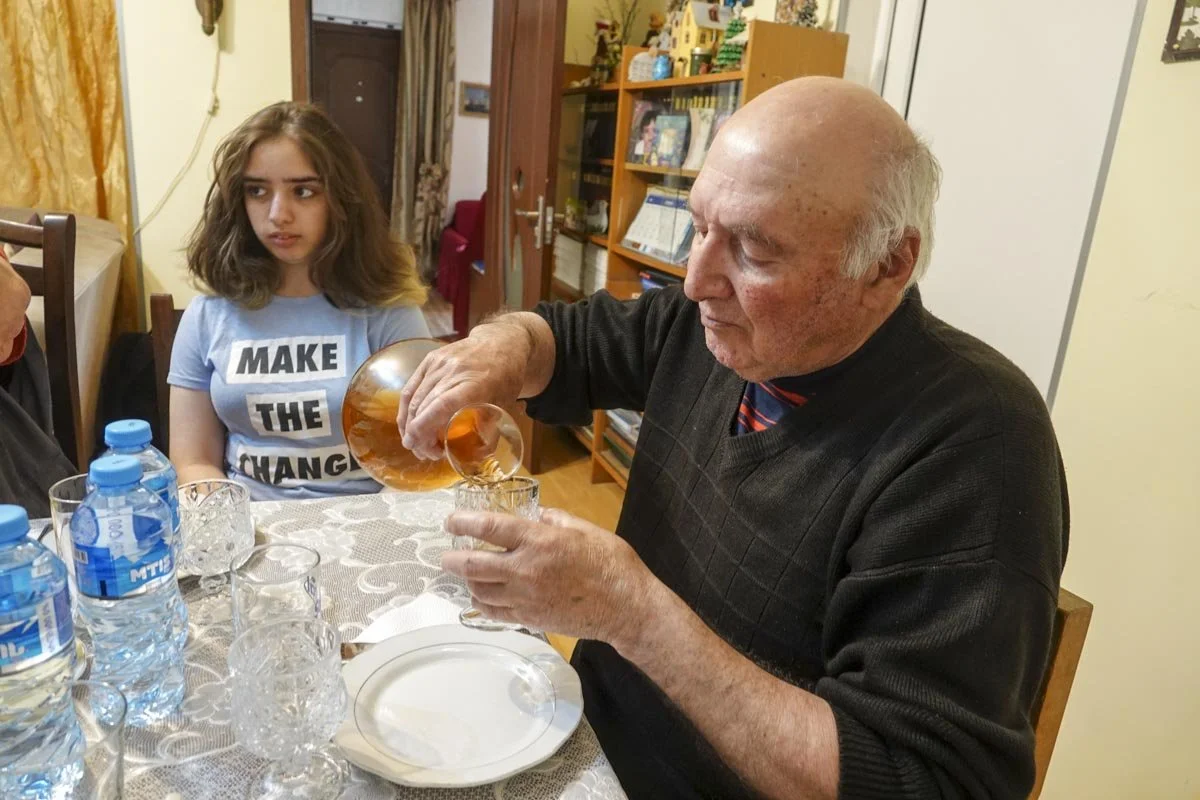Tserovani
We drove north of Tbilisi to visit the village of Tserovani. It's the home of about 8,000 internally displaced people (IDP's) from South Ossetia. South Ossetia is part of Georgia, OR the independent Republic of South Ossetia or the State of Alania, depending on who you ask. While most of the world considers it part of Georgia, five members of the UN recognize it as a sovereign state, Russia being the primary country to do so.
In August 2008, South Ossetian forces and Russia sought to do an ethnic cleansing of the Georgian-populated areas of South Ossetia. They expelled the Georgians living there, mostly back to Georgia. The numbers of displaced Georgians from South Ossetia was somewhere between 20,000 and 60,000 but no one seems to know for sure exactly how many. Our guide put the number at up to 60,000 displaced people.
Georgia's answer to the IDP's was to build twelve small settlements to house the people temporarily, until they could return to their homes in South Ossetia. Seventeen years later, the people are still here in Tserovani and all the other temporary villages. Tserovani is a makeshift functioning village. It has an administrative building, grocery store, small health clinic, and a school, but not much else. These people have no idea if they will ever be able to return to their homes in South Ossetia.
Tserovani has over 2,000 cottages to house about 8,000 people. The cottages are all three-bedroom, single story, simple white cottages with red roofs and originally, each one was exactly the same. The cottages were all arranged in an orderly grid. They came with only a washing machine and a water heater. Tserovani lacks agricultural lands, has next to no jobs, has communal fees, water problems, and many other issues. Heating in winter is an extreme problem for their thin-walled cottages and very cold winters. Most locals struggle to afford to pay their gas and electricity bills. And of course, over the seventeen years, each household has modified their structure, color, yard, and so forth.
Our visit here was to the headquarters of 'For Better Future', a non-governmental organization (NGO) and The Youth House of Tserovani. Their mission is to: 1. Employ women IDP's and youth; 2. Promote the technique of traditional Georgian craft, and 3. Reinvest revenues into implementing the mission of the Organization. We heard a lecture about Tserovani, and the ethnic cleansing that led to the construction of Tserovani, and the people who ended up here and their plight here since 2008. The NGO foundation hopes to serve as a link between these wayward South Ossetians and the rest of Georgia.
We also did a craft project here as part of our visit. It was an enamel workshop. We were shown a slide show about how it's done and given help with our project. We got to make an enamel pendent of our own.
Below, you can see one street of Tserovani. If you look towards the back, you can see that the town just goes on and on and it's all the same, or at least it was originally all the same. It was laid out on a grid pattern.
Next is a slide from our enamel workshop, where we learned what we would be doing. We then each made our own small pendent. Cloisonne' is an ancient art technique used for decorating metal objects, typically with enamel. It uses thin wires to create compartments to contain the enamel. Once the compartments are filled, the object is fired until the enamel melts and fuses into a smooth, colorful surface.
I chose a simple pendent, an apple, and finished quickly. I then set off exploring the area outside of the workshop. I found this bus parked behind the workshop building in an open area. I went in and introduced myself. They had books, movies, tapes, maps, and all sorts of things, all in English. The woman was very nice and very informative. I suspect this was more money-well-spent by the US as these people also seem to love the US.
As part of our visit to Tserovani, we had a home-hosted lunch with one of the families. There was one woman, her sister, their father (Grandpa), and one daughter, or niece. The daughter was our translator, and she spoke very good English. The father came home around the end of our meal. In the first photo, you can see our cook in her very small kitchen. And this is her entire kitchen.
I'll just include two photos from lunch. We had khachapuri (bread, cheese, and spices), cheese, tomatoes, cucumbers, lobiani (bread and beans), preserved figs, rose hip jam, and cupcakes for dessert.
I sat next to Grandpa and across from his granddaughter, our interpreter. He makes his own wine from vines growing around their house. You can see him pouring me my first glass of wine. It was very mild but very tasty. As I was sitting right next to Grandpa, (yes Grandpa to Grandpa), every time my wine glass got empty, he filled it back up. You are looking at the first of ten glasses of wine for me at this lunch. After all, I didn't want to offend him by not drinking his wine. And of course, no more photos were taken from this location....







